Inside The New York Botanical Garden
Posted in Exhibitions, The Orchid Show on March 9 2010, by Plant Talk
 |
Jessica Blohm is Interpretive Specialist for Public Education. |
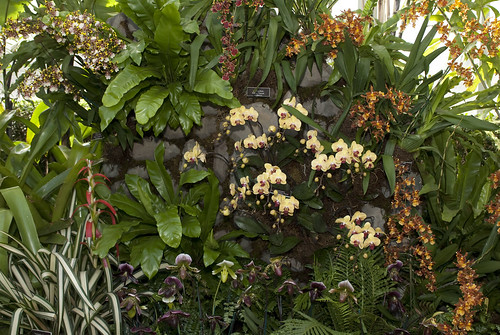 Christopher Columbus first landed in Cuba in 1492, leading the way to the country’s being settled in 1511 by the Spanish, who quickly discovered how well suited the land was for growing sugarcane. The plant, which is from the South Pacific island of New Guinea and thrives only in tropical areas, had been introduced to the New World by Columbus during his second voyage (1493–96).
Christopher Columbus first landed in Cuba in 1492, leading the way to the country’s being settled in 1511 by the Spanish, who quickly discovered how well suited the land was for growing sugarcane. The plant, which is from the South Pacific island of New Guinea and thrives only in tropical areas, had been introduced to the New World by Columbus during his second voyage (1493–96).
European colonial powers established huge slave-based sugar plantations throughout Cuba and the Caribbean. The cane sugar industry became Cuba’s economic mainstay of the 17th and 18th centuries.
But by the 20th century, the popularity of sugarcane gave way to an alternative source of sugar—the sugar beet, which could be grown in Europe and other temperate regions. This new sweetheart crop plant, coupled with the abolition of slavery in 1886, resulted in the closing of numerous sugar mills throughout Cuba and the Caribbean. Ruins dotted these lands, many of which have since been reclaimed by native forest.
A re-created sugar mill ruin and sugar cane can be seen in The Orchid Show: Cuba in Flower.
Get Your Tickets
Posted in Science on August 20 2009, by Plant Talk
Garden Scientist Studies “Culturally Keystone Species”
 |
Brian M. Boom, Ph.D., is Director of the Caribbean Biodiversity Program at The New York Botanical Garden.
|
Add one more item to the long list of threats that indigenous peoples around the world have to their cultural survival: global warming.
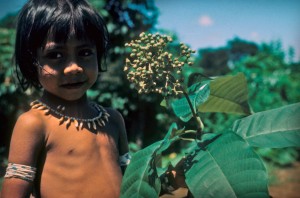 In the past, when the climate changed, indigenous groups could usually migrate to areas where the climate was suitable for their ways of life. Now, with indigenous groups often restricted to territories that are surrounded by farms, ranches, and settlements of more populous and powerful non-indigenous peoples, there is usually no where for them to go. They must endure the climatic changes by adapting; if they cannot adapt, their cultures may become extinct.
In the past, when the climate changed, indigenous groups could usually migrate to areas where the climate was suitable for their ways of life. Now, with indigenous groups often restricted to territories that are surrounded by farms, ranches, and settlements of more populous and powerful non-indigenous peoples, there is usually no where for them to go. They must endure the climatic changes by adapting; if they cannot adapt, their cultures may become extinct.
While the general problem of climate change to indigenous groups is global, it is also occurring in the Amazon, an area I have studied. A recent New York Times article reported that a drier, hotter Amazonia due to deforestation and climate change is killing off the fauna and flora that indigenous groups of the region depend on for their survival. And I have some data that bear on elucidating the gravity of this issue.
In the 1980s, I teamed up with fellow botanist Ghillean Prance and anthropologists William Balée and Robert Carneiro on a comparative ethnobotanical project with the goal of quantifying the use of trees by four indigenous Amazonian groups. We published the results of our studies in 1987 in the journal Conservation Biology (vol. 1, no. 4) under the title “Quantitative Ethnobotany and the Case for Conservation in Amazonia.” Our main general finding was that these groups had specific cultural uses for between about 50% to more than 75% of the tree species in their territories. This result illustrates just how tightly dependent native Amazonians are on their environment for cultural survival.
Read More
Posted in Exhibitions, Programs and Events, The Edible Garden on August 5 2009, by Plant Talk
 |
Gayle Schmidt is Manager of Public Education. |
 Imagine relaxing in a big backyard, enjoying a summer evening with friends along with good food, good music, and beautiful surroundings.
Imagine relaxing in a big backyard, enjoying a summer evening with friends along with good food, good music, and beautiful surroundings.
Well, you can do that right here at the Botanical Garden. On the next three Thursday nights beginning tomorrow, we continue our Edible Evenings series with a special addition—the Waterlily Concert series. These evenings are so fantastic, with great talent and friendly company to share in the event.
During Edible Evenings, the Garden’s hours are extended—until 8 p.m. for exhibitions and until 9 p.m. for the programs. In the cooler evening hours you can view the exhibitions in The Edible Garden, including Fruits, Roots, and Shoots, Martha Stewart’s Culinary Herb Garden, and the Beginners Vegetable Garden. Of course, you’ll also want to stop in to the Conservatory Courtyards to see Waterlilies and Lotus: An Aquatic Exhibition.
All evening at the Tasting Terrace you can sample beer and wine and specialty foods as well as learn about the research on edible plants by Garden scientists. You can also learn from Garden horticulturists about how to start your own herb or vegetable garden. Beer, wine, snacks, and sandwiches are available for purchase as you settle in for the cooking demonstrations and the concerts at the Conservatory Kitchen on the Conservatory Lawn. (The stage is adaptable to each event, so there is no need to re-orient your seating!)
The critically acclaimed Jeb Patton Trio will play a jazz set on August 6 following the infused tea demonstration by Mandy Aftel that complements the Coffee and Tea theme of the evening. She will show how to create scented teas and talk about the herbs and flowers such as jasmine, ginger, and rose used to make the teas.
Read More
Posted in Exhibitions, The Edible Garden on July 17 2009, by Plant Talk
 Gregory Long is President and CEO of The New York Botanical Garden.
Gregory Long is President and CEO of The New York Botanical Garden.
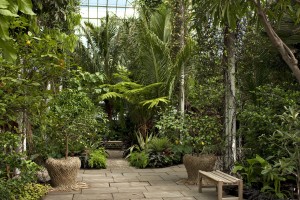 The Edible Garden is meant to inspire visitors and to teach them about growing great food. One of the 11 exhibits featured in the summer-long celebration, Tropical Fruits, Roots, and Shoots in the Enid A. Haupt Conservatory, not only delivers on both counts but is a real showstopper as well, with more than 280 tropical plants and fruit-bearing trees, and dozens in flower or fruit right now.
The Edible Garden is meant to inspire visitors and to teach them about growing great food. One of the 11 exhibits featured in the summer-long celebration, Tropical Fruits, Roots, and Shoots in the Enid A. Haupt Conservatory, not only delivers on both counts but is a real showstopper as well, with more than 280 tropical plants and fruit-bearing trees, and dozens in flower or fruit right now.
Francisca Coelho, Senior Curator and Associate Vice President for Glasshouses and Exhibitions, has outdone herself with this tropical edibles exhibit, which features lush, elaborate displays of rare and beautiful vegetation, including everyday favorites like coffee, coconut, and cinnamon growing alongside more unusual fare like passion fruit, tamarind, and açai.
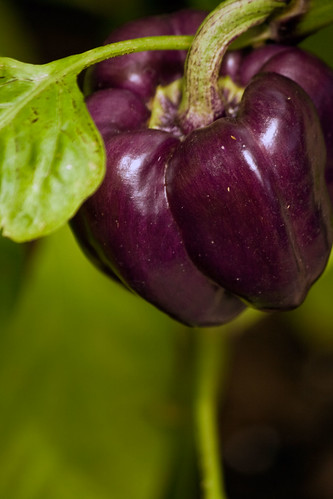 Fran presents a global as well as a personal view of foods. You can see and learn about some of the world’s basic food crops such as rice, corn, and sorghum—staples many people have never seen in their plant form—as well as witness 42 kinds of hot peppers, Capsicum (and a handful of sweet varieties). Fran grew up eating food accented with peppers in her native Trinidad. In the Caribbean, peppers are showy and spicy, and the same plant can produce fruits of widely divergent colors. For instance, the Bolivian rainbow pepper starts off purple and then turns yellow and then orange and then red. “Green and red peppers are pretty boring. Gardeners should go for a variety on both color and taste,” Fran says. Some of her favorite recipes utilizing peppers are posted on our Edible Garden Web pages.
Fran presents a global as well as a personal view of foods. You can see and learn about some of the world’s basic food crops such as rice, corn, and sorghum—staples many people have never seen in their plant form—as well as witness 42 kinds of hot peppers, Capsicum (and a handful of sweet varieties). Fran grew up eating food accented with peppers in her native Trinidad. In the Caribbean, peppers are showy and spicy, and the same plant can produce fruits of widely divergent colors. For instance, the Bolivian rainbow pepper starts off purple and then turns yellow and then orange and then red. “Green and red peppers are pretty boring. Gardeners should go for a variety on both color and taste,” Fran says. Some of her favorite recipes utilizing peppers are posted on our Edible Garden Web pages.
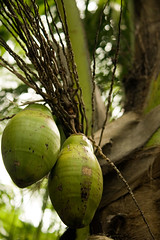 While the exhibit features plants that have edible parts, many more plants beyond peppers are ornamental. Gardeners have manipulated edible plants over the centuries to hybridize ornamentals. Fran notes: “When we garden in the Caribbean, we stick ornamentals among the food plants.” Purple seems to be an attention-getting, commanding, vibrant color with the most captivating foliage. Cordyline fruticosa ‘Negri’, the ti (pronounced “tie”) plant has deep purple, almost black, leaves. It is often used as a border plant in the Caribbean and is also used in cooking: food is wrapped in the large, thin leaves and dropped into a broth, stew, or soup. Other ornamental food plants include the grain amaranth (Amaranthus), which was used by Aztecs as cereal, and shiso (Perilla), with its deep purple, fluted, undulating leaves, used as a seasoning and as a tea.
While the exhibit features plants that have edible parts, many more plants beyond peppers are ornamental. Gardeners have manipulated edible plants over the centuries to hybridize ornamentals. Fran notes: “When we garden in the Caribbean, we stick ornamentals among the food plants.” Purple seems to be an attention-getting, commanding, vibrant color with the most captivating foliage. Cordyline fruticosa ‘Negri’, the ti (pronounced “tie”) plant has deep purple, almost black, leaves. It is often used as a border plant in the Caribbean and is also used in cooking: food is wrapped in the large, thin leaves and dropped into a broth, stew, or soup. Other ornamental food plants include the grain amaranth (Amaranthus), which was used by Aztecs as cereal, and shiso (Perilla), with its deep purple, fluted, undulating leaves, used as a seasoning and as a tea.
The biggest surprises? The cashew (Anacardium occidentale), which comes from the same plant family as poison ivy and mango. Wrapped in a poisonous seed coat to protect against nature’s predators, the cashew nut is found at the end of a fleshy, flashy, bright-red fruit. And the ice cream bean (Inga jinicuil), which has a seed that when mature is fat and filled with a creamy pulp that tastes like vanilla ice cream.
You must come visit The Edible Garden and Fruits, Roots, and Shoots to see for yourself. I believe there has never before been such a display on such a scale.
Posted in Gardening Tips on June 1 2009, by Sonia Uyterhoeven
A Caribbean Cocktail: Tropical Plants in the Home Garden
 |
Sonia Uyterhoeven is Gardener for Public Education. Join her each weekend for home gardening demonstrations on a variety of topics in the Home Gardening Center. |
 Tropical plants make wonderful specimen plants for a container or a welcome and exotic addition to your perennial border. Cannas and bananas are two of the most popular candidates. Both thrive when placed in sunny conditions away from the wind. Many of the variegated cannas such as Canna ‘Stuttgart’ do best when given some afternoon shade.
Tropical plants make wonderful specimen plants for a container or a welcome and exotic addition to your perennial border. Cannas and bananas are two of the most popular candidates. Both thrive when placed in sunny conditions away from the wind. Many of the variegated cannas such as Canna ‘Stuttgart’ do best when given some afternoon shade.
Cannas can either be grown as annuals or overwintered indoors. Once the frost cuts back the cannas, the rhizomes can be dug up and stored in slightly damp peat moss or in vermiculite in a cool, dark area for the following year. Banana should be potted up and also stored in a dark, cool area (below 55° F). The plants go dormant but should not dry out completely (check moisture levels once a month). Move them outside once it warms up or transition them slowly on an enclosed porch or greenhouse in spring.
There are many other tropical plants on the market these days that will set your garden on fire. Hibiscus ‘Maple Sugar’, as the name suggests, has dark maroon maple-like foliage. It complements cannas nicely and its deep tones add striking contrast to any combination.
Some other dark foliage favorites include Persian shield (Strobilanthes), purple spiderwort (Tradescantia), and Joseph’s coat (Alternanthera). Persian shield can handle drought, deer, and rabbits. Its foliage presents a glowing combination of purple, silver, and green, making it a vibrant addition to any perennial garden. To create a sophisticated color echo in your border, pair it with silver foliage such as dusty miller (Senecio), wormwood (Artemisia), or plectranthus (Plectranthus). If the foliage is getting too ungainly just pinch it back to create a more compact specimen.
Read More
Posted in Programs and Events on September 12 2008, by Plant Talk
 |
Gayle Schmidt is Coordinator of Public Education. |
 It’s crunch time, making sure all the plans are in order for the all-day annual celebration of Fiesta de Flores on Sunday, September 14. Performers—check. Helpful staff and volunteers—check. Flowers blooming impeccably—check! I can’t quite take credit for the last one, but flowers are a top feature of the day.
It’s crunch time, making sure all the plans are in order for the all-day annual celebration of Fiesta de Flores on Sunday, September 14. Performers—check. Helpful staff and volunteers—check. Flowers blooming impeccably—check! I can’t quite take credit for the last one, but flowers are a top feature of the day.
All around the Garden I have helped coordinate the day’s activities, which range from children’s botanical crafts to gardening demonstrations to salsa dancing and face painting. The celebration of flora and culture relates to the Garden’s scientific research program, which began in the Caribbean region in the 1890s and where our scientists are still active today. Imagine being out in the field with them by visiting the replicated rain forests in the Enid A. Haupt Conservatory.
This year the celebration is complemented by a concert with Dan Zanes and Friends (see the blog post of September 9), who just released a Spanish-language CD that brings together many voices from many Latin American countries.
I get to learn a lot of new skills and new lingo working with so many different people to put on events. It is quite a long list of things to keep track of, but I hope you can come out and enjoy this wonderful day with me. Afterward, I’ll be back planning events for your next visit. Keep your fingers crossed for nice weather!
Check out Saturday’s programming
Check out Sunday’s programming
Posted in Programs and Events on August 29 2008, by Plant Talk
  |
Written by Kate Murphy, a junior at Fordham University, with additional reporting by Genna Federico, a senior at St. John’s University. Both interned in the Communications Department this summer. |
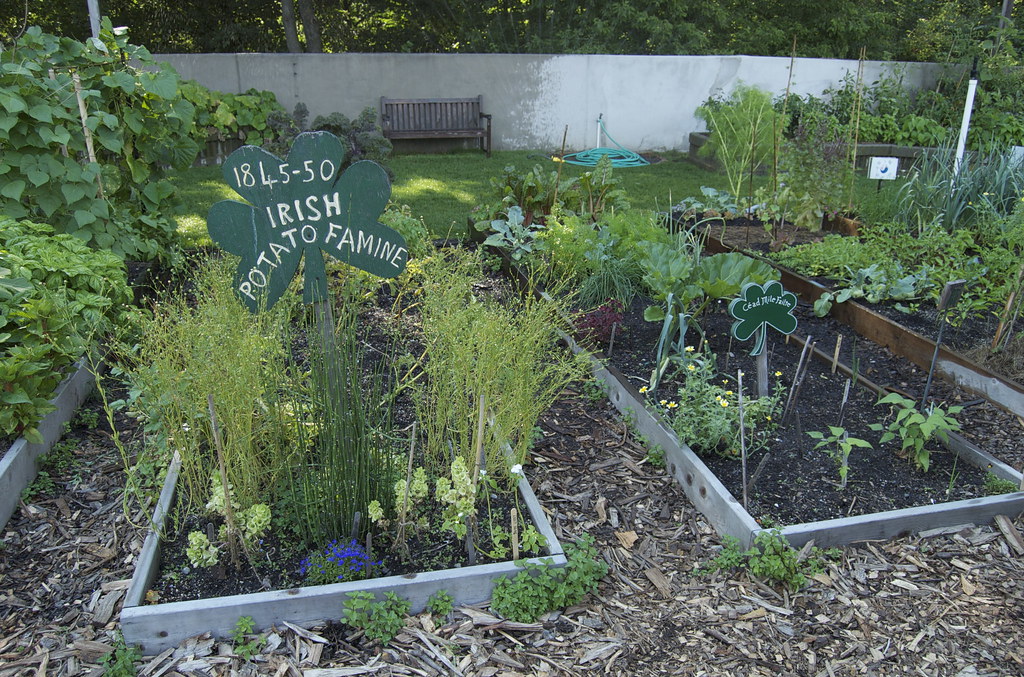 Taking a walk through the Global Gardens is like taking an international journey—minus the need for a passport and visit to Customs). NYBG visitors can drift from China to the Caribbean to Italy—in garden form, that is. And as summer (sadly) comes to a close so, too, does the celebration of the Global Gardens that has been going on all this month at the Ruth Rea Howell Family Garden. This, the final weekend of the celebration, will be dedicated to the Irish Garden, planted and maintained by Ann Creaney.
Taking a walk through the Global Gardens is like taking an international journey—minus the need for a passport and visit to Customs). NYBG visitors can drift from China to the Caribbean to Italy—in garden form, that is. And as summer (sadly) comes to a close so, too, does the celebration of the Global Gardens that has been going on all this month at the Ruth Rea Howell Family Garden. This, the final weekend of the celebration, will be dedicated to the Irish Garden, planted and maintained by Ann Creaney.
Ann became familiar with Irish gardening from first-hand experience, and her story is an interesting one, to say the least. In the early 1940s young Ann and her family visited her grandmother in Ireland. But when they were to return to America, the waters they would have to traverse by boat had been set with mines because of the war. As a result, Ann ended up living the next seven years in Ireland, time spent with no electricity and no running water but lots of gardening experience.
Read more about Ann’s journey and check out the Shepherd’s Pie recipe after the jump.
Check out Saturday’s Programming.
Check out Sunday’s Programming.
Read More

 Christopher Columbus first landed in Cuba in 1492, leading the way to the country’s being settled in 1511 by the Spanish, who quickly discovered how well suited the land was for growing sugarcane. The plant, which is from the South Pacific island of New Guinea and thrives only in tropical areas, had been introduced to the New World by Columbus during his second voyage (1493–96).
Christopher Columbus first landed in Cuba in 1492, leading the way to the country’s being settled in 1511 by the Spanish, who quickly discovered how well suited the land was for growing sugarcane. The plant, which is from the South Pacific island of New Guinea and thrives only in tropical areas, had been introduced to the New World by Columbus during his second voyage (1493–96).













